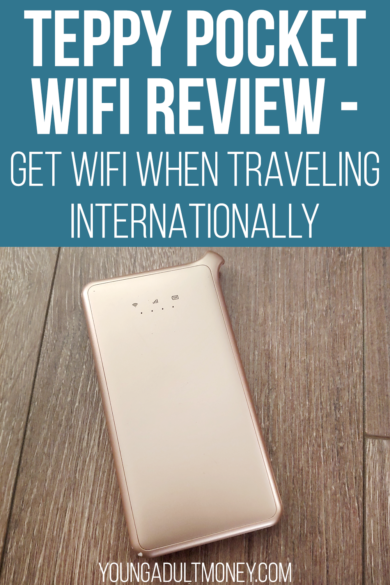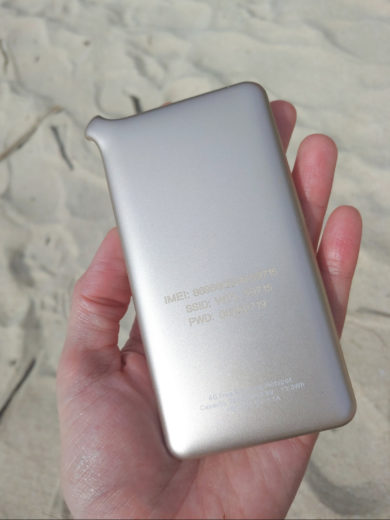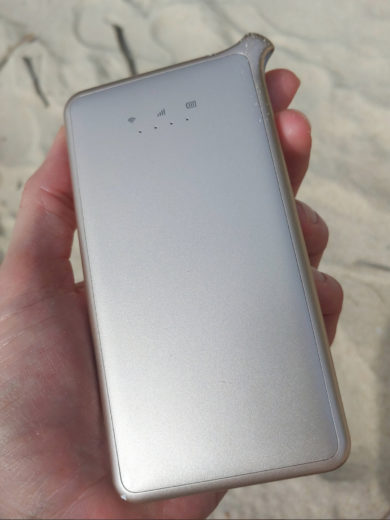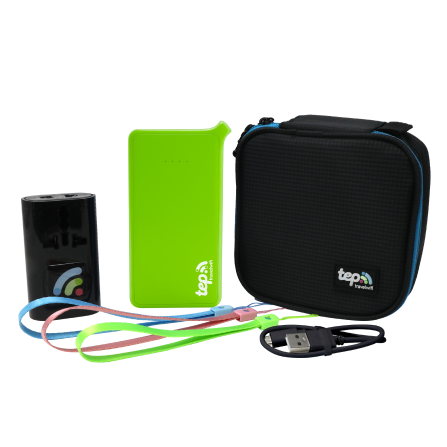 When my wife and I were planning our trip to Vietnam and Thailand, one thing I wanted to make sure we had was cell phone service.
When my wife and I were planning our trip to Vietnam and Thailand, one thing I wanted to make sure we had was cell phone service.
Being connected is so important when you travel today. It makes it easy to Google things on the spot, use essential apps like Uber (or Grab in SouthEast Asia), and share updates on social media.
In some countries you will have limited service through your home carrier. For example in Thailand and Vietnam we had 2G through T-Mobile, though calls cost something like $0.30 a minute. 2G is pretty freaking slow, though, and is barely better than no service.
There are two basic alternative options available: a local sim card and pocket WiFi.
A local sim card requires you to use a different sim card (and in turn, a different phone number). While this isn’t a bad option, I wanted something a bit more versatile, which is why I decided on going with a pocket WiFi.
A pocket WiFi is a piece of hardware that is about the size of a phone that gives you a WiFi hotspot wherever you are. The company I went with, Tep Wireless, works in over 100 countries. Tep Wireless calls their pocket WiFi a “Teppy” and, true to the name, will fit in most pockets.
How the Teppy pocket WiFi works is simple: there is a button on the side that you hold down to turn on and off. Teppy will search for a signal and set up a WiFi hotspot. Then you use the details on one side of the Teppy, such as the hotspot name and password (see the previous pic), to connect. The other side of the Teppy has a few indicator lights, and will show battery life on a scale of one to four when you turn on the device. Here’s the other side of the Teppy:
Let’s go over some of the details of the Teppy Pocket WiFi, including delivery and return logistics, cost, reliability of the signal, and battery life.
Delivery and Return Logistics
Tep has a couple of drop-off and pick-up options, but because they operate globally you will likely end up having your Teppy shipped to you. The initial shipping of the device is free, but there will be a charge to ship it back. For me, living in Minnesota, the charge was $5.95. They include a pre-paid envelope for shipping back, and it can be dropped off in a USPS mailbox.
The one thing that can cause some issues is the fact you need to sign for the Teppy. That means you may need to coordinate with USPS if they stop by during the day to drop it off and you aren’t home. Tep Wireless does make an effort to have the drop-off happen a reasonable number of days before your rental period starts. For me it was a Tuesday with the rental period officially starting on Saturday. One alternative to having your Teppy delivered to your home is having it delivered to your work. If you have someone who signs for all the packages that come in you don’t have to worry about missing the delivery.
Overall I found the logistics of receiving and returning the Teppy to be easy enough. Having the device in my hand before heading out on my trip was a big plus, and a reason why I went with a pocket WiFi instead of a local SIM card. If you get a local SIM card you have to coordinate it after landing. If you’re like me, the less you have to do after landing the better. It was nice being able to fire up the Teppy and be connected within a minute of landing.
With the Teppy you receive a carrying case, charger, charging cable, instruction/reference manual, and one or more clips. I didn’t bring the carrying case and instead put everything in my electronics organizer.
Cost
According to Tep Wireless, plans start at $5.95 a day. There may be some geographies where you can get this rate, but for Asia I paid $12.95 a day. For a two week trip that comes out to $181.30, not including the $5.95 fee to return the device through USPS. This provided us coverage across Asia for up to five devices at a time. It provided 1GB a day at 4G, and unlimited 2G after 1GB of data.
I found this rate to be comparable to other pocket WiFi options. Ultimately there doesn’t appear to be much pricing variability in the market.
$12.95 a day may seem like a lot, but the benefit is having WiFi connection wherever you go. In Vietnam and Thailand this made using Grab, their version of Uber, easy. It also made it really easy to google things on-the-go, get directions with live updates (very helpful for navigating the Bangkok BTS Skytrain), and communicate with hotels and tour operators as needed.
There are cheaper rates, especially if you only need your Teppy for one country. For example at the time of this writing here’s what the three Thailand rates are:
- $7.95/day for 1 GB/day 4G, unlimited 2G after
- $9.95/day for 2 GB/day 4G, unlimited 2G after
- $11.95/day for 5 GB/day 4G, unlimited 2G after
Looking back, it would have been an interesting test to get the Asia region Teppy as well as a Teppy for a specific country, like Thailand, and seeing if they both worked throughout all of Asia. I can’t prove it but I would bet that if someone chooses the Thailand option they would receive the service throughout all of Asia. Perhaps a test for another trip?
A quick tip that will save you money – when you get to the checkout page for your Teppy, open a new tab in your browser. Google “Tep Wireless Discount Code.” This saved me 10%, or $18, on my purchase. It only takes a minute or two and could save you money. I recommend doing something similar with every purchase you make online. There isn’t cashback available with Tep Wireless, but there is for most other companies online.
Reliability: Signal & Battery Life
Battery life with the Teppy was solid. I let it run until it died and it lasted somewhere in the range of 10-12 hours. But most days I charged it throughout the day. Here’s the power bank I use and recommend, which has two USB inputs so you can charge your Teppy and a phone at the same time. At night I kept the Teppy plugged into a wall outlet and recharged my power bank.
I’m personally used to having unlimited data, so it was a bit disappointing to be throttled back to 2G after using up your daily data allotment. When you’re traveling you likely are going to use GPS often and with multiple devices connected to a Teppy you can go through the 4G really quick. I recommend switching to hotel WiFi or other WiFi networks when possible, to save as much of your 4G allotment as possible.
Despite the limited amount of 4G data allotted to your Teppy each day, there is no denying that being connected is a huge benefit, even at a slower speed. It would have been difficult traveling throughout Thailand and Vietnam without a pocket WiFi.
On the note of reliability, I had read some reviews that said Teppy doesn’t work well when you are moving, such as on a train or car. We didn’t seem to have this issue, and it worked “good enough” even when when we were traveling in a car, which we did often during the tours we took.
Should You Use Teppy Pocket WiFi Next Time You Travel?
I went on a trip to Aruba a year ago and did not have data. To use the internet I had to wait until I was at the hotel and connect to WiFi, or find other public WiFi such as at restaurants. Despite having the map of Aruba downloaded on my phone and using the internet at the hotel before heading out for the day, looking back things would have been a lot easier with a pocket WiFi.
With Teppy there are a number of benefits that I think make it worth the cost:
- Receive the device before you leave for travel
- 4G allotment each day with unlimited 2G after
- Connect up to five devices such as smartphones and tablets
- Private connection (as opposed to public WiFi)
It would be ideal if there was a higher amount of 4G allotted to you each day, and of course if the price was cheaper. We may have to wait until SpaceX has their global satellite broadband set up to see major competition, though, and for the time being what Tep Wireless offers is a solid option when traveling internationally.
You can learn more and get your Teppy pocket WiFi here.
from Young Adult Money https://ift.tt/2M2I078






0 Comments